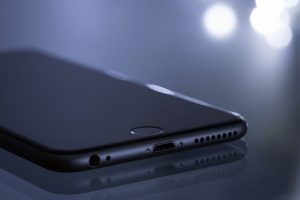Hello again,
I was on the sofa watching TV. The film, chosen by my sister, wouldn’t have been my choice but I was wanting to engage with her, a sister’s night in, so yes, I’d chosen to watch it with her.
 On a cushion on my lap, my phone.
On a cushion on my lap, my phone.
I became aware that I’d checked my phone several times… for an email I was hoping to get from a colleague, for updates to my favourite online newspaper, for Facebook updates – I’d shared a funny question about rainbow chard earlier in the evening.
Now, gone 8pm, my work day was long over (the email would wait until tomorrow), the news of the day had pretty much happened (so updates were unlikely) and no, my chard question hadn’t lit the touch paper of mass interaction from my friends (maybe it wasn’t that funny after all)…
And I couldn’t help but notice the intense desire to pick up my phone yet again.
It was only minutes since I last looked and I noticed that I had to consciously resist the urge to pick the phone off the cushion once more.
Would it have been a problem if I had? Hmmm, maybe, maybe not.
I wasn’t really interested in the film so no, why not do something else. Yet I was choosing to watch the film as a deliberate act of solidarity with my sister, a bonding exercise if you will. Each time I picked up the phone I signalled to her that no, I’m not interested in bonding with you right now. That mattered to me!
The scientist in me also noticed the intense power of the desire to look at the phone – what was that about?
I recalled reading that checking our phone gives us a dopamine hit, a transient increase in the level of the neurotransmitter, dopamine, which is associated with feel-good, a reward if you like, for taking a specific action.
So why does looking at our phones make us feel good?
Apparently the same mechanisms are at work as when we gamble, play roulette or a slot machine… you put in the coins, pull the handle and the dials spin. Sometimes you get nothing. Occasionally a few coins fall out as your reward and every now and then someone will strike the jackpot. This randomness apparently creates an addictive and intensely pleasurable experience.
So with our phones. Sometimes there’s nothing new to see, occasionally a new message or email, sometimes we strike the jackpot and our post goes viral. What a blast!!!
For me the real questions was:
Did I really, freely want to pick up my phone or was it like an addiction I couldn’t resist?
Neuroscience reveals that there is a brain circuit consisting of “stimulus-desire-action” that takes about 0.3 seconds to complete. In 300 milliseconds we notice something, decide we want it and begin to move to get it. When we achieve our desire: dopamine!
While 300 milliseconds sounds like a very short time to me, apparently it leaves a sizable window of time in which to apply the brakes and use our “won’t power”.
We can become aware of the stimulus and the desire to move and then choose “No”.
Developing this “won’t-power muscle” is something that is common to many tasks where we want to say “No”, no to picking up the phone while spending time with someone, no to checking emails while we’re engaged in a productive task, no to having a biscuit, no to getting in the lift when we’d decided to increase our step count by taking the stairs. Saying “No” to one will develop your ability to say no in other, different circumstances.
So what about the number of times you are tempted to look at your phone?
A couple of things strike me:
- It is helpful to be able to cultivate that won’t-power muscle. Once it’s consciously developed it can help us show restraint in many different areas of our life.
- Developing won’t-power does, initially at least, require the expenditure of additional energy. You might feel this is a good investment OR you might decide it’s more helpful to remove the temptation.If you don’t want to be tempted, don’t sit with the phone on your lap, in sight, within easy reach.
Try switching off your phone, removing or disabling notifications from specific apps at particular times, you could try putting your phone on the other side of the room, in a drawer or even in a different room…
Which strategy would be most helpful for you?
In just a matter of moments I had recognised my temptation, understood it’s sources and implications. I decided to choose not to look at the phone and put it face down on the table, just out of my reach. Then I sat back, snuggled into the sofa and tried to catch up with the plot line in the film…
If you’ve found this interesting and want to share it with a friend or colleague I would be delighted – and why not suggest that they subscribe to my newsletter too:
Send me Margaret’s newsletter!
Have fun developing your won’t-power!
Margaret
PS: If you’d like more free resources including ebooks and videos do visit my website, https://margaretcollins.com/resources-for-resilience/ and have a browse!
Free: Resources for Resilience
Let me know what you think!